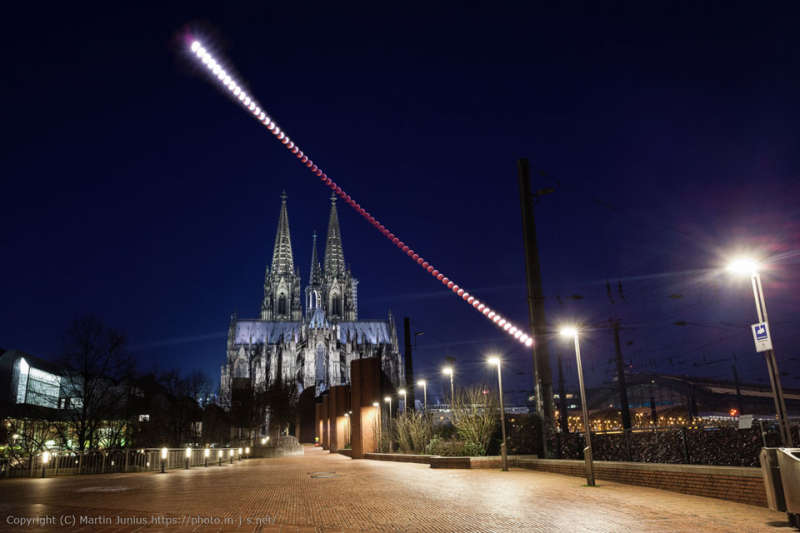Credit & Copyright: Martin Junius
Explanation:
Why would a bright full Moon suddenly become dark?
Because it
entered the
shadow
of the Earth.
That's what happened
Sunday night as the Moon underwent a
total lunar eclipse.
Dubbed by some as a
Super
(because the Moon was angularly larger than usual, at least slightly)
Blood
(because the scattering of sunlight through the Earth's atmosphere makes an eclipsed
Moon appeared unusually red)
Wolf
(because January full moons are sometimes called Wolf Moons from the
legend that wolves like to howl at the moon) Moon Eclipse, the
shadowy spectacle was visible from the half of the
Earth
then facing the
Moon,
and was captured in
numerous
spectacular photographs.
Featured, a notable image sequence was captured over the
Cologne Cathedral, a
UNESCO World Heritage Site, in
Cologne,
Germany.
The
lunar eclipse sequence
was
composed from 68 different exposures captured over three hours during freezing
temperatures -- and later digitally combined and edited to remove a cyclist and a
pedestrian.
The next total lunar eclipse
will occur in 2021.
Gallery:
Sunday Night's
Total
Lunar Eclipse
1999 2000 2001 2002 2003 2004 2005 2006 2007 2008 2009 2010 2011 2012 2013 2014 2015 2016 2017 2018 2019 2020 2021 2022 2023 2024 2025 |
Yanvar' Fevral' Mart Aprel' Mai Iyun' Iyul' Avgust Sentyabr' Oktyabr' Noyabr' Dekabr' |
NASA Web Site Statements, Warnings, and Disclaimers
NASA Official: Jay Norris. Specific rights apply.
A service of: LHEA at NASA / GSFC
& Michigan Tech. U.
|
Publikacii s klyuchevymi slovami:
total lunar eclipse - lunnoe zatmenie
Publikacii so slovami: total lunar eclipse - lunnoe zatmenie | |
Sm. takzhe:
Vse publikacii na tu zhe temu >> | |
